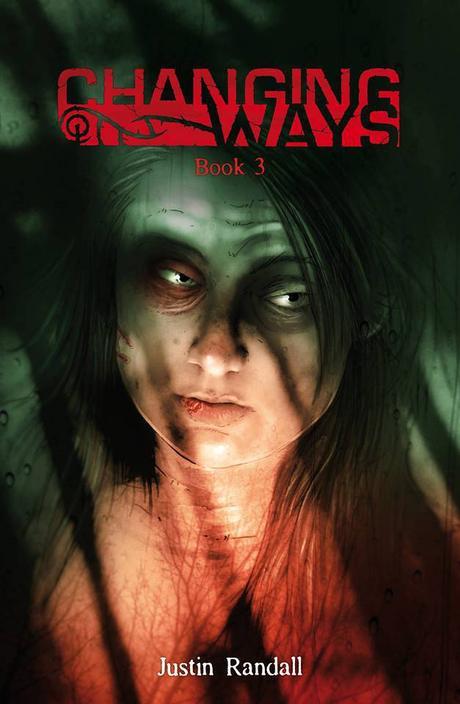Before the Comics Code took the fun out of everything, horror was a big seller. Nowadays best selling books like The Walking Dead and Locke and Key have created a new market for mature, well written horror graphic novels. We’ve been lucky enough to snag a chat with the writer and artist of the best indie horror book on the shelves: Justin Randall, creator of Changing Ways.
https://houseofgeekery.files.wordpress.com/2015/07/justin-randall-house-of-geekery.mp3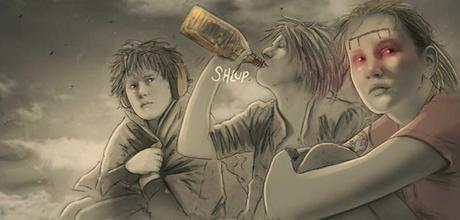
If you haven’t read Changing Ways yet, you can up your horror/indie/comic cred here.
G-Funk: It’s Supanova in Perth, 2015, and we’re talking to Justin Randall. Hello.
Justin Randall: Hello.
Funk: For those listening at home, what do you do?
Justin: I am a graphic novelist, which is is a fancy way of saying that I write stories and draw pictures in a book form.
Funk: A little bit more complicated, because that covers everything from the Mister Men stories all the way up.
Justin: True. Mainly horror. Supernatural horror is what I’m mostly known for. Some 30 Days of Night, some Silent Hill and my own series Changing Ways.
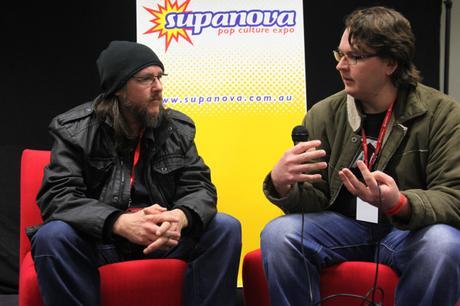
Funk: We’ll come to Changing Ways a bit later because I really like Changing Ways and I want to talk about it.
Justin: Excellent.
Funk: Specifically where Book 3 is…
Justin: (Laughs)
Funk: You’ve really come into prominence with 30 Days of Night and Silent Hill, how did that work come about?
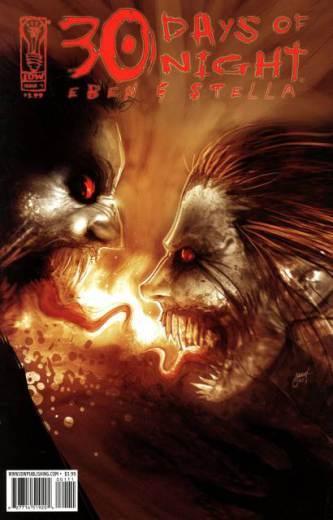
Justin: It’s interesting that 30 Days of Night book was the first comic I’d done ever. I’d done a few little things on the side but nothing published. I was working on Changing Ways and I sent samples through to Steve Niles, whose the writer for 30 Days of Night, quite naively sent him samples of Changing Ways and said ‘hey, I’d like to work with you some day…I’d even do it for free’. Luckily he didn’t remember that bit, he just remembered the offer. Ben Templesmith, who was the co-creator of 30 Days of Night, was a friend of mine and I think he must of vouched for me because they gave me the gig to do it. I think it was halfway through the book that IDW emailed to ask if this was my first comic, and I said ‘yes, it is’. They went ‘OK, no worries,’ so they didn’t realize it was the first comic I’d worked on, but I’d obviously worked as an illustrator. There’s a lot of networking a bit of good luck I think.
Funk: The 30 Days of Night, and you later worked on Silent Hill and now Changing Ways – they’re all really twisted, full of disturbing imagery. Where does that come from?
Justin: I’d…personally for me it’s almost like getting things out. I’m a friendly, happy person but the stuff I draw and illustrate is often dark and foreboding. The two don’t often match up. It only makes sense…I feel like I’m kind of harnessing, and trapping, and containing all the weird and creepy and spooky stuff that’s inside me and if I put it on the page then I’ve controlled it. Do you know what I mean? Psychologically it’s like turning the lights on and looking under the bed. I get to control the monster because I’ve pinned it down.
Funk: Riiight…maybe I should have gotten into comics. As well as being quite twisted and scary looking, you’ve got a really unique art style. What’s your process, how do you come to that? I can’t even work out how you do it.
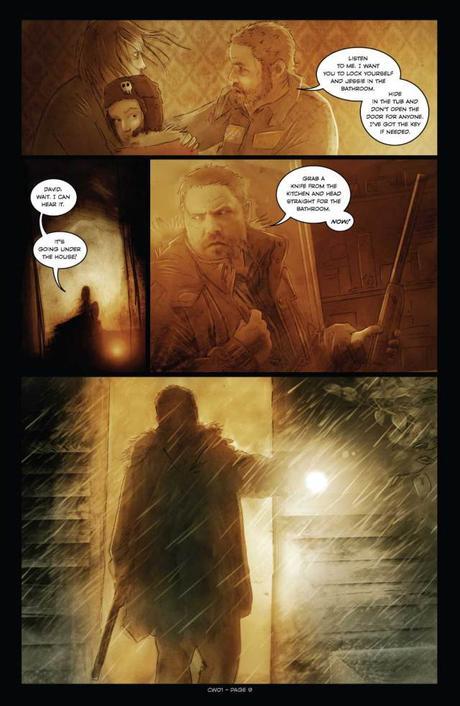
Justin: I did start recording the process for a book, a technique book, and I think I was 40 minutes in of just saying the steps to do and I was still in the traditional painted stage. The technique I have is really quite unique but only because of my own limitations. I found it very difficult early on to draw the way I felt I was supposed to. Some things people find easy, I find hard. I experienced this when I used to be skateboarder. I would skate ramps and do wall rides and go down flights of stairs and do 360s but my ollies were terrible. The one basic jump manoeuvre that all people can do, anyone can do, mine were terrible. When it came to my art work the things that other found really easy, or could learn a lot quicker I just couldn’t do. I would pick up the Hogarth drawing books and really struggle with perspective and getting proportions right, so then I started photographing.
I would photograph all my content, and I truly believed that it had to be all my own work, so I would photograph models and locations and I would start to stitch the scenes together like a montage. From there I would draw all over them and put them on a light table and redraw it again and print it out on to card and then paint it. Then I would scan that and I would start all the color work. A lot of people don’t realize that every I do is hand drawn and hand painted before it even touches the computer. But I’m also using a lot of photo montaging of images I’ve taken to build that initial base.
Funk: That’s why it’s got such a layered look to it…
Justin: Yeah, and because the final drawing is in alinement with the original photos I can pick and choose little tiny parts of the photos to pop through, the most common being the nose. I hate drawing noses, I don’t want draw a nose, but you’re always going to see the nose when you’re using the face as a focal point. If you want to look for where my photography is creeping through you’ll always spot it around the nose area. My job is to stitch it together so you don’t notice the separation. There has to be a very smooth blending so any photo elements don’t pop out and look uncomfortable. They need to blend in with their image. Digitally I’ll spend a fair bit of time touching up and making sure those stitches within the scenes don’t stick out.
Funk: Let’s get onto Changing Ways. We’ve read it, and we’ve reviewed it, can we get from the authors perspective – what is Changing Ways?
Justin: Changing Ways follows a family in a small town where something really weird happens. I usually do the disclaimer that there’s no zombies, it’s not viruses, there’s no vampires, the sort of things you might think will be in there but they’re not. It’s a strange story, quite supernatural. I would describe it as War of the Worlds meets Noah’s Ark without the religion. And that’s the overall Changing Ways mythos. Each book in itself is fairly unique. Book 1 is a 24 hour terror ride, or experience, in a small town with a lot of rain. Book 2 is a road movie almost, out in the desert, and Book 3 is going to be very 70s horror inspired. Very colourful, but again my trademark heavy rain, wooded area, creepy buildings. That’s the stuff I really like. I grew up…I spent a lot of time alone on a farm. My folks would go off or do their own things and I’d be put on a bus to my Grandmothers farm in the middle of nowhere. I’d be alone on this weird farm in the middle of nowhere and I think that’s where a lot of my influences came from.
Funk: How weird was the farm?
Justin: A lot of the places you see in Changing Ways were places I went back to and photographed. The Grey Oaks town is very much like the sort of farming areas I used to go to. It’s creepy.
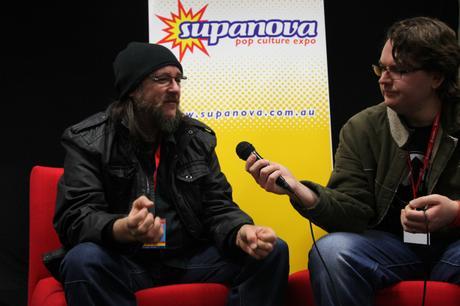
Funk: You said Book 3 is going more 70s, is it going to have ties to the other books?
Justin: Of course. Without giving any spoilers away Book 3 takes place a day…immediately after Book 1, in terms of timeline. You have a ten year gap between Books 1 and 2, which shows you what happened with the children, and then I do something…this is all intentional and, again, without wanting to reveal any spoilers, I had to create some distance with the reader and a particular character. I needed them to let go of a character so the impact of what’s to come will be greater. Book 3 is something I’m really proud of so far. It’s my best work but it’s taken a bit longer. When I say 70s horror I think films like Suspiria…a big film a influence for a lot of my books. I think of a colourful, vibrant colours in dark, spooky buildings and localities. That what I harken back to, it reminds me of those old 70s horror films.
Funk: Nice. I’m really looking forward to that.
Justin: And they’ll be a snowglobe in there to. This is important. I’m going to hide a snowglobe in the book. The first person photograph the snowglobe, to find it, from a hard copy, will get an original piece of artwork from the book. An original painted page.
Funk: I know what I’m doing the first day it’s out. Going through looking for a snowglobe.
Justin: Yeah, I’m going to hide one in there.
Funk: How well hidden?
Justin: Really well hidden. I’m going to make it really well hidden. First person to spot it, photograph it from the book, will get some original art sent to them.
Funk: I’m going to find it. It’s been said now: House of Geekery, I want all my readers on to this. Find it for me. How far ahead have you plotted Changing Ways?
Justin: I actually wrote Book 3 twice. I wrote it with an event that I knew was coming but then decided that the story that I have now put in there, I was going to have it later, and I’ve brought it forward. I wrote Book 3, started the artwork on Book 3 and then reset the whole thing and rewrote Book 3 again and started the artwork again for a completely different story. That’s another reason it’s been delayed a little bit. There’s two scripts there, two books written, and a substantial amount of artwork for a one that may never see the light of day, I don’t know.
Funk: Jules, our photographer has a question for you…go ahead.
Jules: How long does it take to do one page? (Note: in the audio Jules’ follow up questions are hard to make out, but Justin’s response to all the questions is grouped together below).
Justin: One page of the comic can be done in a day, but it depends on what photography I need to take. Often they’ll be day trips where I’ll go to places and try to find localities or even a particular tree. Like a need a particular tree, like an oak tree because the town’s called Grey Oaks, so I might spend half the day looking for a tree. But if I’ve got my image resources I could comfortably finish a piece in one day. That would involve setting the scene up with all the photo elements, then redrawing all the extra content, then redrawing the whole thing in pencil, then painting it in a wash of gray ink. I use a couple of droplets of Indian ink in a shot glass. I have two shot glasses, one with half an inch of water one with one inch of water and in the little one I’d put four droplets in and the tall water I put one droplet in, that’s my might grey, the other’s my dark gray.
Anyone out there who’s been told they have to buy copic markers and spend hundreds of dollars on those expensive textas – you don’t. If you want to do renderings and concept art sketches in blacks and white you can do it very quickly with a cheap imitation sable brush and some ink. I use a really fine .04 mechanical pencil lead, which is so brittle it breaks constantly. You can’t buy them anymore unfortunately…
Jules: You can still get those…
Justin: Can you?! Maybe I’m using .35. It’s super small. I had a friend who was working at Faber-Castell, they went to warehouse and got the whole stock for me. I hope I didn’t dob her in, she gave a me lot, she was one of my students…
Funk: That’s a made up story, nobody is at fault.
Justin: …I may have ended up with a lifetime supply of those particular leads. I draw with those, but when I scan it I bump the contrast up so it looks like ink fine work. I get the benefit of the contrast but I can rub it out.
Funk: Speaking of things you can’t buy any more: Changing Ways Book 1.

Justin: Yeah, it’s run out. It’s on it’s second print run right now so we’re looking at a third print run for the book. It may be when Book 3 is released, I don’t know. It depends on the publisher.
Funk: Just to wrap up, do you have a dream project? If the big names came and said you can any comic you want, any comic character…?
Justin: I do. I actually do. And I’m thinking of just doing it for fun and just starting it. I’ve always wondered why Konami have never done Silent Hill, the first game, as a comic. I don’t understand why. I thought I might just do it for fun, I was going to do two or three pages, just for funsies, because I want to see it as a comic. The first game, or the second game, I don’t understand why they haven’t done it based on such cult classics. That would be a dream job, but I think I’d like to do some of it just for fun.
Funk: Do it and maybe they’ll pick it up.
Justin: If not, it’s still fun.
Funk: Silent Hill and your particular style – they mesh.
Justin: Yeah, I have to get better at some action sequences. I think I handle suspense very well, but I want to get better at handling action and motion a little bit more. I’m just trying to get better.
Funk: Thanks for stopping and talking to us, we’ll let you get back to your booth.
Justin: Awesome, thank you.
